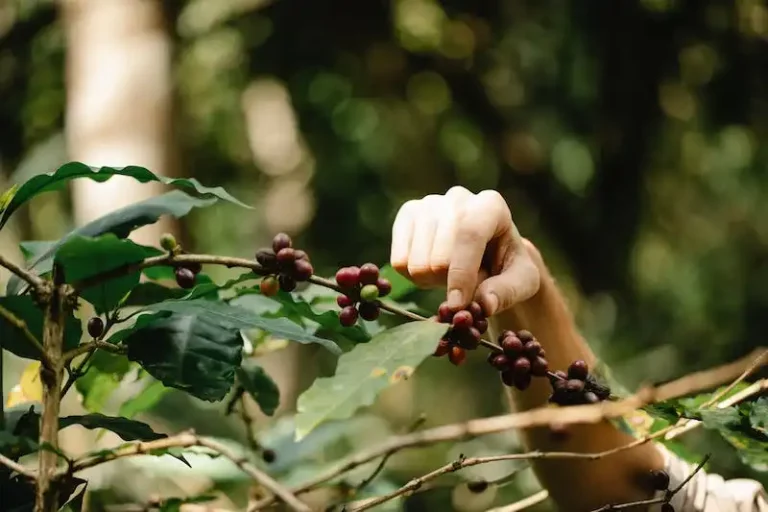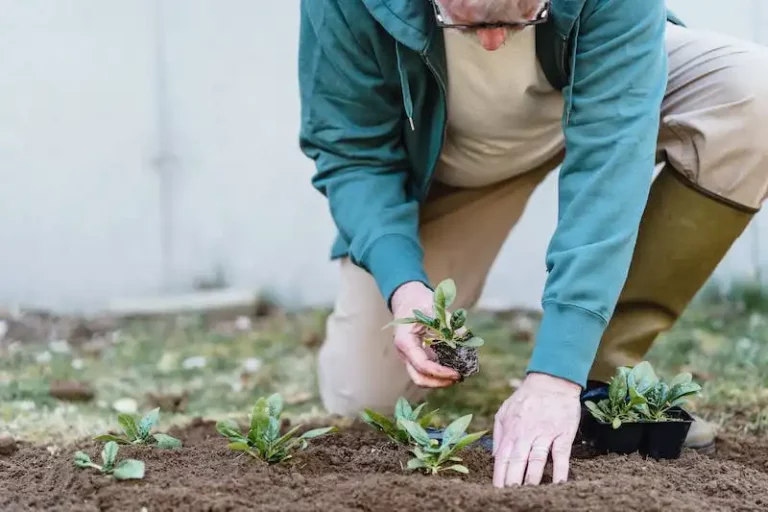Borage, a beautiful blue flowering herb, is commonly grown in gardens as an annual. It is a hardy plant that is relatively easy to grow from seed, making it a popular choice among gardeners. Borage is known for its vibrant blue blooms and its many uses, including culinary, medicinal, and companion planting.
When propagating borage, it is best to sow the seeds directly outdoors, as the plant does not transplant well. Borage prefers well-drained soil and full sun, although it can tolerate partial shade. It is important to water the plant regularly, especially during dry periods, to ensure proper growth and flowering.
Borage is a versatile herb that can be used in a variety of ways. The leaves and flowers can be used to make herbal teas, while the young leaves can be added to salads for a refreshing twist. Borage also attracts pollinators, making it a great addition to any garden.
One of the benefits of growing borage is that it is a hardy plant that can withstand frost. However, if you live in an area with harsh winters, it is recommended to grow borage in a pot for easier overwintering. Borage can also be pruned to encourage more blooms and to prevent it from becoming too leggy.
Overall, borage is a beautiful and useful herb that can be grown in gardens of all types. Its vibrant blue flowers and medicinal properties make it a favorite among many gardeners. Whether you are a seasoned gardener or just starting out, borage is a great addition to any garden.
How to Grow and Care for Borage Starflower
If you are a gardener, you’ve probably heard of borage starflower. This fascinating herb, also known as Borago officinalis, is grown for its beautiful blue blooms and commonly used in gardens for its companion planting benefits. Whether you’re a beginner gardener or an experienced one, borage is a plant that is worth growing.
Here are some tips on how to grow and care for borage starflower:
- Planting: Borage can be grown from seed or seedling. If you are starting from seed, sow them directly into the garden or in pots about 1/4 inch deep. Borage prefers well-drained soil and bright sunlight, so make sure to select a location accordingly.
- Spacing: Borage plants can grow quite large, so make sure to space them about 12 to 24 inches apart to give them enough room to flourish.
- Water: Borage is a hardy plant that can withstand some drought, but it’s best to water it regularly, especially during dry spells. Be careful not to overwater, as borage prefers slightly drier soil.
- Care: Borage doesn’t require much care, but occasional pruning can help keep the plant tidy and encourage more blooms. Remove any dead or damaged leaves or flowers, and trim back the plant if it becomes too leggy.
- Pests and Diseases: Borage is relatively pest and disease resistant. However, keep an eye out for common garden pests like aphids and slugs. If necessary, treat them with organic insecticides or handpick them off the plants.
- Uses: Borage has a variety of uses, both in the garden and in the kitchen. The leaves and flowers are edible, with a taste similar to cucumber. They can be used in salads, soups, and teas, or frozen into ice cubes for decorative purposes. Borage is also a favorite of bees, making it a great addition to a pollinator garden.
- Propagation: Borage readily self-seeds, so if you let some flowers go to seed, you’ll likely have new plants sprouting up the following year. You can also collect the seeds and store them for future planting.
In ancient times, borage was commonly grown in gardens as an ornamental plant and for its medicinal benefits. According to Britannica, it was also used to enhance courage and dispel melancholy. Today, borage is gaining popularity for its potential health benefits, including anti-inflammatory properties and soothing effects on the skin source.
Whether you plant borage starflower for its stunning blue clusters of blooms, its companion planting benefits, or its various uses, it is a plant that will surely add beauty and interest to your garden.
How to Plant Borage
Borage, also known as starflower, is a beautiful herb that is easy to grow from seed. Whether you’re an experienced gardener or new to gardening, planting borage in your garden can be a rewarding experience. In this article, we will guide you through the process of planting borage, including the best site and soil conditions, planting depth, spacing, and care tips.
Site and Soil Conditions: Borage grows in full sun, but it can tolerate light shade. It prefers well-drained soils but can grow in poor soils as well. Before planting, prepare the soil by removing any weeds and adding compost or well-rotted manure to improve fertility.
Planting Depth and Spacing: Borage seeds should be sown directly in the ground, as they do not transplant well. Plant the seeds about 1/4 inch deep and space them 12 to 24 inches apart. Borage plants can grow fairly large, so make sure to give them enough space to spread out.
Watering and Fertilizer: Borage plants like moderate moisture levels, so water them regularly to keep the soil evenly moist. However, avoid overwatering, as borage can be prone to diseases in wet conditions. Use a balanced fertilizer, such as a 10-10-10 or 20-20-20, once a month to promote healthy growth.
Companion Planting: Borage is a great companion plant for several vegetables and herbs, including tomatoes, squash, and comfrey. It attracts bees and other beneficial insects to the garden, which helps with pollination.
Overwintering: Borage is an annual herb, but it often self-seeds and comes back year after year. If you’d like to have borage plants in your garden year-round, allow some of the flowers to go to seed and the seeds will drop and germinate in the following season.
Harvesting and Uses: Borage leaves and flowers are edible with a mild cucumber-like taste. The flowers can be added to salads, drinks, or used as a garnish. Harvest the leaves and flowers as needed, and remember to wash them thoroughly before use.
Pruning and Repotting: Borage does not require much pruning, but you can trim back the plants to encourage bushier growth. If you’re growing borage in containers, repot the plants into larger pots as they grow to ensure they have enough space for their roots.
Common Questions: If you have any questions or need further information about planting borage, please feel free to reach out. We’re happy to help!
Thank you for choosing borage for your garden. Enjoy the vibrant blue flowers and the many benefits this unique plant has to offer!
When to Plant
When it comes to planting borage, the timing is crucial for a successful harvest. Borage is a culinary herb, also known as starflower, that can be planted directly in the garden or started indoors from seed. It is an annual plant, which means it completes its life cycle in one year.
The best time to plant borage is in the early spring, after the last frost date in your area. Borage is a hardy herb that can withstand cooler temperatures, but it is not frost-tolerant. Frost can damage or kill the young seedlings, so it’s important to wait until the risk of frost has passed before planting outdoors.
When selecting a site for planting borage, choose a location that receives full sun or partial shade. Borage prefers well-drained soils with a pH level ranging from acidic to neutral. It can tolerate a wide range of soil types, but it thrives in soils rich in organic matter. Adding compost to the soil before planting will benefit the growth of the borage plant.
Borage is often used as a companion plant in the garden, as it attracts bees and other beneficial insects with its blue starry flowers. It also acts as a support for taller plants and helps with pollination. Borage is a prolific self-seeder, so be mindful when selecting a planting location, as it can reappear in the garden year after year.
Once planted, borage grows quickly and requires minimal care. Water the young seedlings regularly to keep the soil moist. As the plant grows, borage is quite drought-tolerant and can survive with less water. Thin the borage plants to provide enough spacing for them to grow properly.
Borage can be harvested once it reaches a height of about 12-24 inches. The leaves and flowers of borage are edible and have a cucumber-like taste. They can be used fresh in salads, soups, and other dishes or dried for later use. The flowers can also be used to garnish drinks or as a decorative element in culinary creations.
In addition to its culinary uses, borage is known for its medicinal properties. It has been used for centuries in traditional herbal medicine to treat various ailments. Borage leaves and oil are rich in gamma-linolenic acid (GLA), which has anti-inflammatory and antioxidant effects.
To propagate borage, it can be grown from seed or through seedlings. Borage plants can also be repotted if grown indoors. If you plan to start borage from seed, sow them directly in the garden bed after the last frost date or start them indoors 4-6 weeks before the last frost date. Borage seeds germinate best in warm soil with high humidity.
Borage is a hardy herb that can withstand a wide range of temperatures and humidity levels. It can be grown in various climates and is often used as a medicinal or companion plant. Borage is a plant that is worth considering for your garden, as it not only offers beautiful blue star-shaped flowers but also provides several health benefits.
For more information on how to grow borage, including tips on selecting the right variety and overwintering borage plants, check out resources like Healthline, Britannica, or consult with gardening experts for any specific questions you may have.
Selecting a Planting Site
When it comes to growing borage, selecting the right planting site is crucial. Borage is an annual herb that can reach several feet in height, so it needs enough space to grow. It prefers full sun but can tolerate partial shade.
For borage to grow well, the soil should be well-draining and fertile. It can tolerate a range of soil types, including sandy and clay soils, but it thrives in loamy soil. The pH of the soil should be slightly acidic to neutral.
Borage is a great companion plant in the garden. It attracts bees and other pollinators with its beautiful clusters of blue starflower blooms. It is also known to have a positive effect on neighboring plants, including squash. Gardeners and editors at Britannica suggest planting borage in between rows of other plants to improve their health.
When selecting a site, consider the overwintering capabilities of borage. While it is an annual, borage can overwinter in milder climates and reseed itself. If you want to overwinter borage, make sure to select a planting site with good drainage and adequate space for the plant to spread.
In terms of temperature, borage grows best in mild to warm climates, with an optimum temperature range of 60-85°F (15-29°C). It can tolerate temperatures as low as 40°F (4°C) and as high as 90°F (32°C), but extreme temperatures can affect the plant’s growth and flowering.
It is relatively easy to grow borage from seed. Plant the seeds in the desired planting site at a depth of 1/4 to 1/2 inch (0.6-1.3 cm). Thin the seedlings to provide adequate space for growth, spacing them 12-18 inches (30-45 cm) apart.
Borage does not require much care once established. It is a low-maintenance herb that does not require frequent watering. However, if your soil is poor or the weather is particularly dry, watering once every 7-10 days is recommended. Avoid overwatering, as borage roots are susceptible to rot in waterlogged soil.
Pruning borage is not necessary for its growth, but if you want to control its size or encourage bushier growth, you can prune the plant. Snip off the top one-third of the plant to promote branching.
Borage has both culinary and medicinal uses. In the kitchen, its leaves and flowers are used in salads, soups, and beverages. Medicinally, borage is known for its numerous health benefits, including anti-inflammatory and diuretic properties. However, it is always advisable to consult a healthcare professional before using borage for medicinal purposes.
In conclusion, selecting a suitable planting site for borage is essential for successful growth. Consider factors such as light, soil type, temperature, and overwintering capabilities when choosing a site. With proper care and attention, you can enjoy the beauty and uses of this fascinating herb in your garden.


